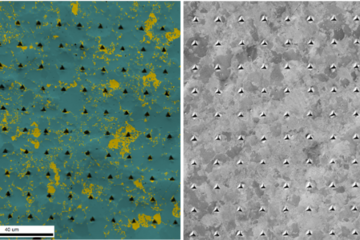All genres
641.
Talk
Sulfur-induced embrittlement of copper. Microscopy congress 2017 – Dreiländertagung (MC 2017), Lausanne, Switzerland (2017)
642.
Talk
In-situ TEM Study of Mechanical Size Effects in TiC Strengthened Steels. Microscopy & Microanalysis 2017, St. Louis, MO, USA (2017)
643.
Talk
Resolving the mechanical performance of materials in microelectronic components with µm spatial resolution. FIMPART - Frontiers in Materials Processing Applications, Research and Technology, Bordeaux, France (2017)
644.
Talk
Multiprobe and Multiscale Characterisation of complex Materials. Fraunhofer Conference ‘The Future of Materials – Materials Future‘, Halle, Germany (2017)
645.
Talk
Structure and Micro-/Nanomechanics of Materials. DLR Cologne, Köln, Germany (2017)
646.
Talk
Hydrogen Embrittlement on Tungsten using Deuterium Plasma Charging and Microscale Fracture Experiments. GDRi Mecano General Meeting, Toulouse, France (2017)
647.
Talk
In-situ nanoindentation of hydrogen bcc Fe–Cr charged surfaces: Current status and future perspectives. Frontiters in Material Science & Engineering workshop: Hydrogen Interaction in Metals, Max-Planck Institut für Eisenforschung, Düsseldorf, Germany (2017)
648.
Talk
Severe Microscale Deformation of Pearlite and Cementite. 2017 MRS Spring Meeting & Exhibits, Phoenix, AZ, USA (2017)
649.
Talk
Fracture Toughness of Hexagonal and Cubic NbCo2 Laves Phases. Nanobrücken 2017, European Nanomechanical Testing Conference, University of Manchester, Manchester, UK (2017)
650.
Talk
A Brief History of Metals. Public Named Max Planck Lecture, MPIE Düsseldorf, Düsseldorf, Germany (2017)
651.
Talk
Towards understanding fracture experiments at the microscale. DPG Frühjahrstagung 2017, Dresden, Germany (2017)
652.
Talk
Hydrogen Embrittlement on Tungsten using Deuterium Plasma Charging and Microscale Fracture Experiments. DPG-Frühjahrstagung 2017, Dresden, Germany (2017)
653.
Talk
Grain boundary embrittlement in copper by sulfur. DPG Tagung 2017, Dresden, Germany (2017)
654.
Talk
Advanced Atom Probe Tomography. 25th Annual Meeting of the German Crystallographic Society, Karlsruhe, Germany (2017)
655.
Talk
Understanding plasticity in microstructure tribology: experiments and simulations. Friction, Wear and Wear Protection 2017, Ettlingen, Germany (2017)
656.
Talk
Resolving the interplay of nanostructure and mechanical properties in advanced materials. Karlsruher Werkstoffkolloquium im Wintersemester 2016/2017, Karlsruhe, Germany (2017)
657.
Talk
Atomic Scale Characterization of Complex Materials. Physikalisches Kolloquium, Fakultät für Mathematik und Physik, Universität Freiburg, Freiburg, Ger,amy (2017)
658.
Talk
Towards thermally stable nanocrystalline alloys with exceptional strength: Cu–Cr as a case study. 16th International Conference on Rapidly Quenched and Metastable Materials (RQ16), Leoben, Austria (2017)
659.
Talk
High Temperature Plasticity of Cu–Cr Nanolayered and Chemically Nanostructured Cu–Cr Films. 2017 TMS Annual Meeting & Exhibition, San Diego, CA, USA (2017)
660.
Talk
Towards probing the barrier strength of grain boundaries for dislocation transmission. Electronic Materials and Applications 2017, Orlando, FL, USA (2017)











